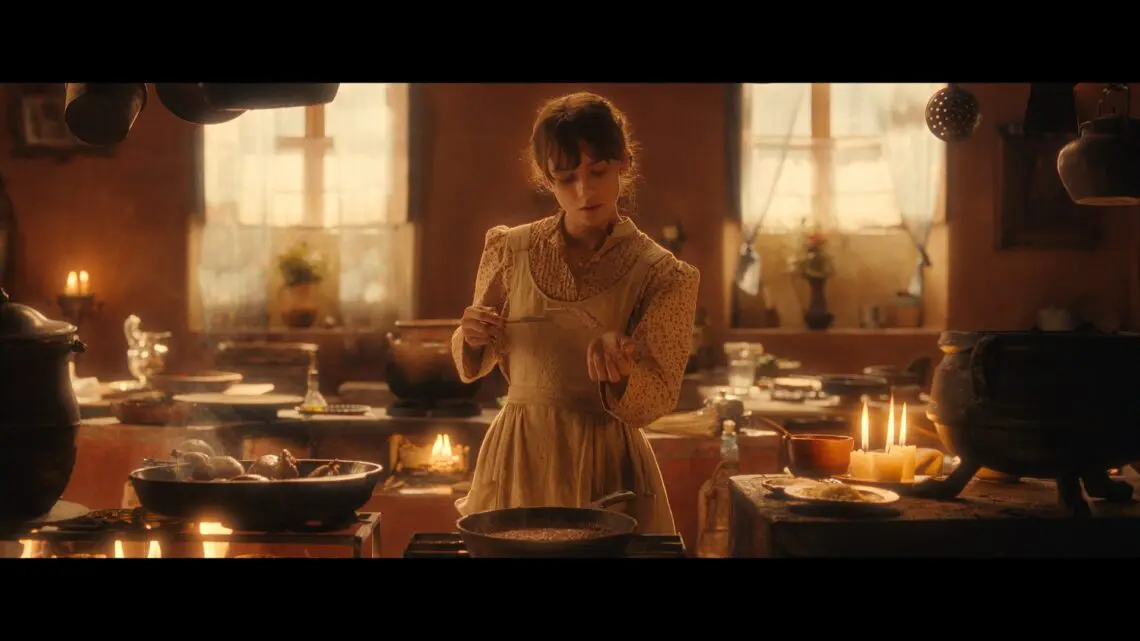HBO reshapes a beloved classic with ‘Like Water for Chocolate’
A timeless story returns to the screen
Thirty-two years after its critically acclaimed cinematic debut, the timeless narrative of “Like Water for Chocolate” finds a new home on HBO. Adapted from Laura Esquivel’s best-selling 1989 novel, this new six-episode Spanish-language series immerses us in early 20th-century Mexico, capturing the essence of a love story entwined with cultural traditions and historical turbulence.
Meet the De La Garza family
At the heart of this lush adaptation is Tita, portrayed by Azul Guaita, the youngest De La Garza daughter whose forbidden romance with childhood sweetheart, Pedro Múzquiz (played by Andrés Baida), drives the narrative forward. Tita’s sisters, the rebellious Gertrudis (Andrea Chaparro) and the stoic Rosaura (Ana Valeria Becerril), navigate their own paths under the strict guidance of their embittered and vengeful mother, Elena (Irene Azuela).
Setting the stage
The series begins in 1892 with Tita’s poignant birth scene, enveloping viewers immediately in a world rich with symbolism and emotion. Elena, dressed in mourning attire, is seen chopping onions in the kitchen, a scene that foreshadows the series’ intricate relationship with food. From here, the narrative leaps forward to the early 1900s, capturing pivotal moments in Tita and Pedro’s evolving relationship.
Chemistry and casting
To sustain the complex, decades-spanning love story, impeccable casting was crucial. Fortunately, Guaita and Baida bring the intense chemistry needed to make Tita and Pedro’s story resonate deeply with the audience. Throughout the series, their romance simmers with longing and passion, making each interaction a testament to the enduring power of love.
Historical and familial tensions
The series doesn’t shy away from exploring broader themes. Set against the backdrop of the Mexican Revolution, it delves into the family dynamics further complicated by Elena’s interference, especially the rivalry between Tita and Rosaura. Directors Julian de Tavira and Analorena Perezrios balance the interpersonal drama with the historical context, crafting a tapestry that speaks to both personal and collective struggles.
Food as a central motif
A distinctive feature of “Like Water for Chocolate” is its emphasis on food, almost as a character in its own right. Tita’s refuge in the kitchen alongside cook Nacha (Ángeles Cruz) highlights moments of culinary and emotional bonding. The vivid portrayal of dishes like cream fritters and Chabela wedding cake elevates the sensuality and symbolism that are integral to the story. The camera’s lingering on butter, sugar, eggs, and creams enhances this aspect, adding layers of meaning to Tita’s relationship with her heritage and emotions.
Magical realism
True to Esquivel’s novel, the series embraces magical realism, with Tita’s burgeoning emotions manifested in fantastical ways. Episode 2, for instance, depicts a despondent Tita’s heartbreak as a frigid cold overtakes her bedroom, symbolically freezing her surroundings. These mystical elements serve as poignant external representations of her inner turmoil, seamlessly blending the ordinary with the extraordinary.
Comprehensive storytelling
Executive produced by Salma Hayek Pinault, the series maintains fidelity to the original film while exploring new dimensions. At its core, “Like Water for Chocolate” is a meditation on the cost of true love, the weight of familial expectations, and the struggle for self-determination. Tita and Pedro’s romance is the emotional anchor, but the narrative also celebrates defiance, the courage to forge one’s path, and the transformative power of love.
Premiering soon
“Like Water for Chocolate” is set to premiere on November 3 on HBO, with new episodes releasing weekly on Sundays. This adaptation promises to be an indulgent and worthwhile experience, inviting viewers to reconnect with one of the most cherished love stories in contemporary literature.
For more details on upcoming movies and series, explore more here.
Stay tuned to our updates and share your thoughts on social media to continue the conversation.

 Italian
Italian







